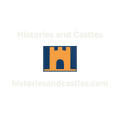Edward I’s conquest of Wales showed his typical ruthlessness and sharp administrative skills. His efficient tactics led to a rapid takeover, with Welsh territories falling under military control and codified law. However, despite the success of the path to the Statute of Rhuddlan, tensions remained high. The Statute may have set the groundwork for assimilation, but Welsh cultural identity was not so easily subdued. Sporadic rebellions persisted for centuries, resisting outside rule.
Edward I’s Conquest of Wales: The Path to the Statute of Rhuddlan

For centuries, Wales retained its independence following the 1066 Norman conquest of England. Whilst Welsh princes and lords paid homage and taxes to the English crown, a separate Welsh political and cultural identity endured. However, this balance of power shifted amidst the ambition of King Edward I, who was determined to strengthen the English monarchy whilst securing his borders through complete conquest of Wales.
After failed negotiations and the refusal of Welsh ruler Llywelyn ap Gruffudd to pay homage, Edward invaded North Wales in 1277. Through superior resources and strategy, Edward’s forces defeated the Welsh and seized the castles at Dolwyddelan and Rhuddlan. This allowed the English to build roads and fortifications across the northern territories, establishing a position of strength for further conquest.
First Resistance: Wales Defiant
Despite Edward’s early victories and the Treaty of Aberconwy in 1277, Welsh resistance continued under Llywelyn ap Gruffudd and his brother Dafydd ap Gruffudd. Skirmishes, raids, and instability endured over the next five years. Then, in 1282, tensions erupted once more when conflict arose between Llywelyn/Dafydd and English Marcher lords along the eastern Welsh borderlands. King Edward responded decisively to this threat to his nobles’ interests, launching a fresh invasion which would pave the way for the conquest’s completion.

Decisive Invasion: Edward’s Conquest of North Wales
In 1277, after failed negotiations with Llywelyn ap Gruffudd over refusal to pay homage, King Edward I launched a decisive invasion of North Wales. Edward’s forces rapidly gained the upper hand, defeating the Welsh and seizing the castles at Dolwyddelan and Rhuddlan. This allowed the English to consolidate power by building strategic roads and fortifications across the northern territories.
Despite the territorial gains, Llywelyn refused to surrender. The 1277 Treaty of Aberconwy restored lands west of the River Conwy to him, preserving his title as Prince of Wales whilst requiring tribute payments to Edward. An uneasy peace followed as Llywelyn consolidated his remaining authority in Gwynedd.
Skirmishes and tension endured over the next five years until 1282, when conflict erupted between Llywelyn/Dafydd and Marcher lords in eastern borderlands. Edward responded with overwhelming force.
Death of a Leader: Llywelyn ap Gruffudd Falls

In December 1282, the tide turned decisively at the Battle of Orewin Bridge. Llywelyn ap Gruffudd was lured into a carefully planned ambush and killed whilst separated from his main forces. His death was a monumental blow to the Welsh, severely weakening organized resistance.
Llywelyn’s brother Dafydd ap Gruffudd continued a guerilla insurgency over the winter, evading Edward’s troops in the mountains of Snowdonia. But in June 1283 he was betrayed by Edwardian supporters, captured, and then executed as a traitor that autumn in Shrewsbury.
With the loss of both symbolic figureheads, much of the remaining Welsh opposition capitulated. Isolated resistance continued but Edward was now firmly in military occupation, ready to start assimilation under English governance.
Assimilation Commences: The Statute of Rhuddlan
With resistance receding after the loss of Llywelyn ap Gruffudd, Edward moved rapidly to consolidate his conquest. In 1284 he implemented the Statute of Rhuddlan, securing Wales’ formal status as an English territory annexed to the crown.
The Statute established English common law and introduced England’s local administrative model. Wales was divided into counties and shires with appointed sheriffs, bailiffs, and justice officials wielding control. This enabled effective governance whilst facilitating English settlement and cultural assimilation.
The remaining rights of the native Welsh nobility were restricted by the statute. Welsh cultural practices were also suppressed as Edward laid the foundation for lasting English domination over the occupied territories.
Conquest and Control: Wales Subdued
In the aftermath of Edward’s conquest, English control was far from assured. Isolated resistance continued and over the next two centuries, numerous rebellions challenged the crown’s authority.
However, England’s superior resources inevitably consolidated power over Wales through persistent military domination. Construction of formidable castles such as Caernarfon, Conwy, and Harlech underscored this projecting authority over the landscape.

Whilst resentment at subordination to England endured in the hearts of many Welsh, the legal foundation for assimilation was cemented in stone and law. Edward’s conquest demonstrated his emergent, authoritarian approach to monarchical power, enforced by strength of arms. The administrative model established by the Statute of Rhuddlan also provided a blueprint for extending bureaucratic governance in England itself.
Aftermath and Effects
By force of arms and bureaucratic governance Wales was brought to heel. Edward’s approach reflected emergent authoritarian attitudes toward monarchical power and provided inspiration for strengthening royal administration in England.
For the fiercely independent Welsh, it represented a cultural watershed and the suppression of ancient autonomy. In time, the conquest would be completed through integration not elimination. The Welsh dynastic House of Tudor would ultimately provide England one of its defining royal families. But at what cost of heritage? The echo of Wales’ subjugation persists even still.





